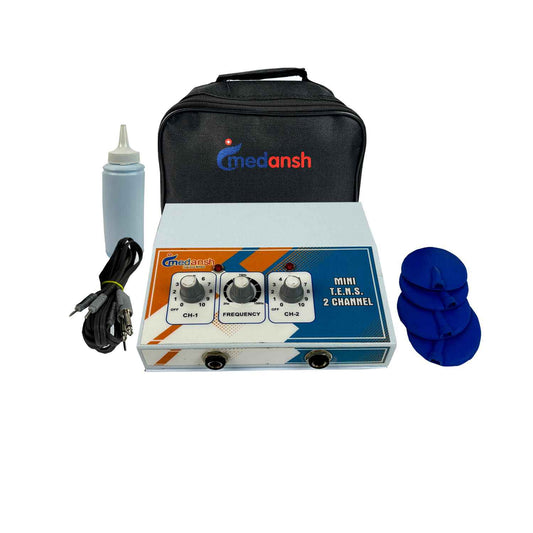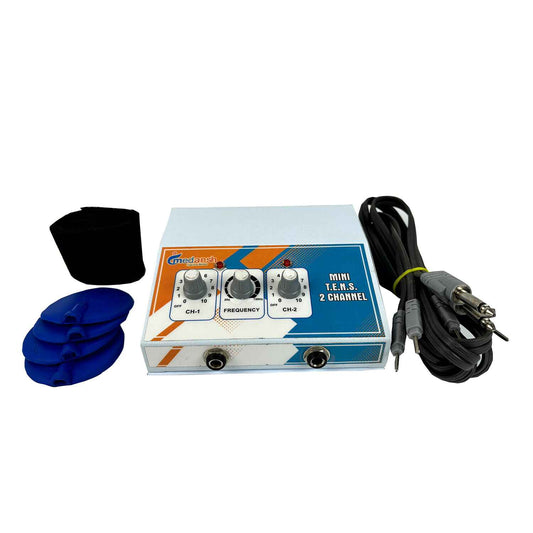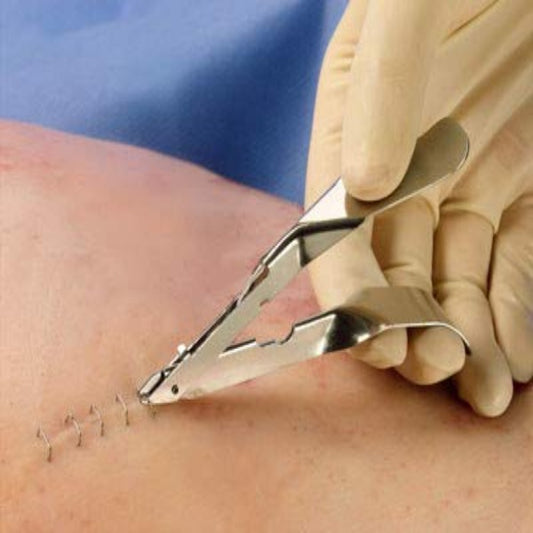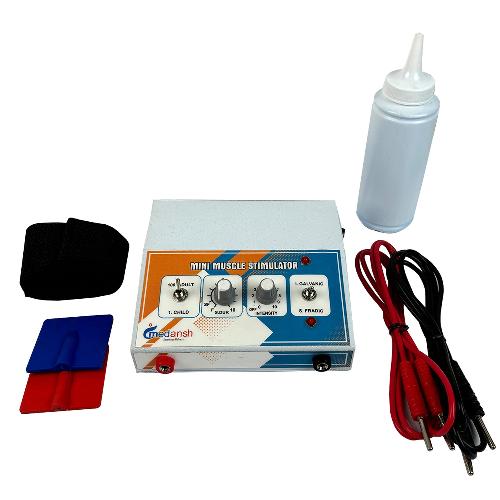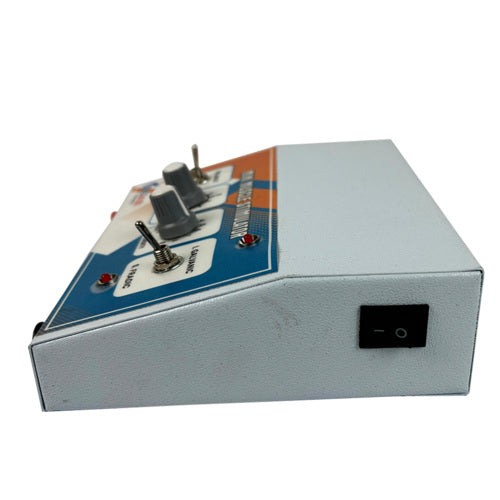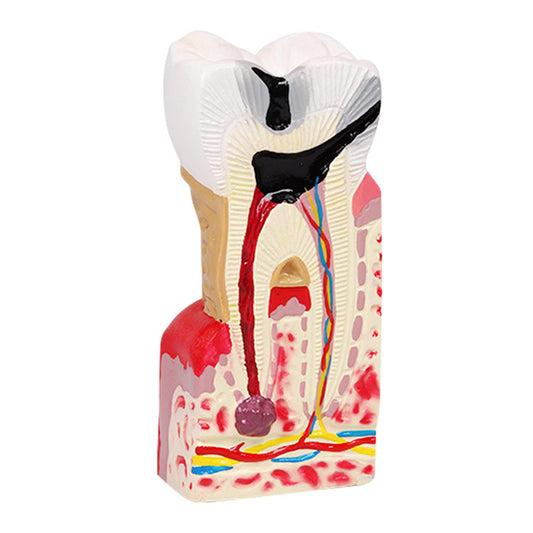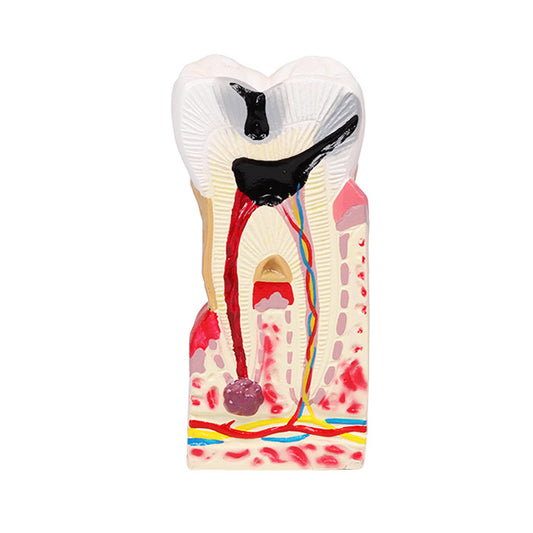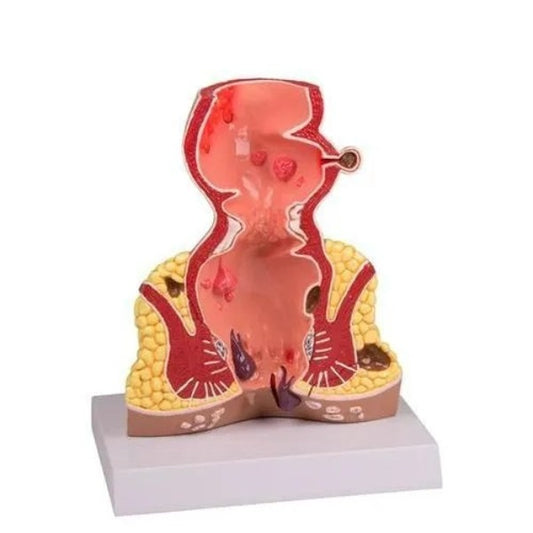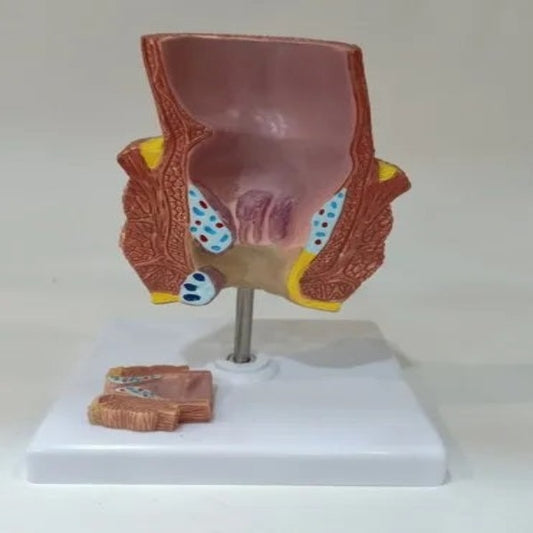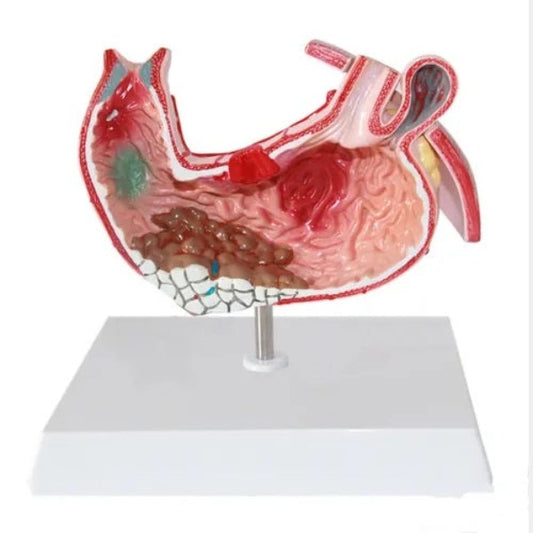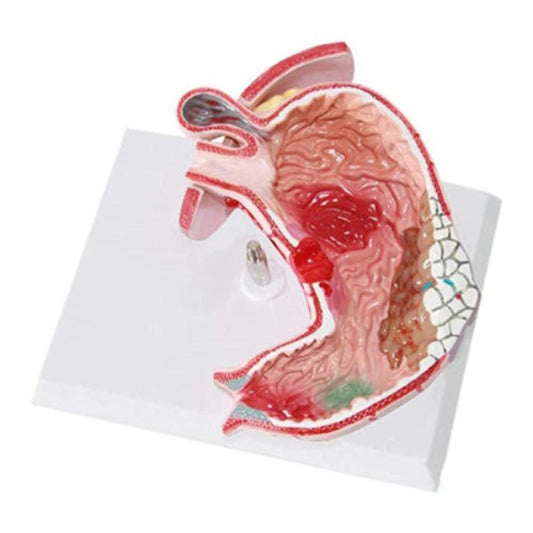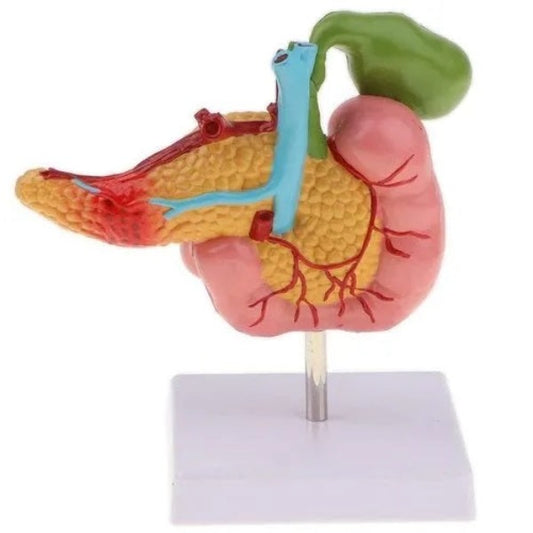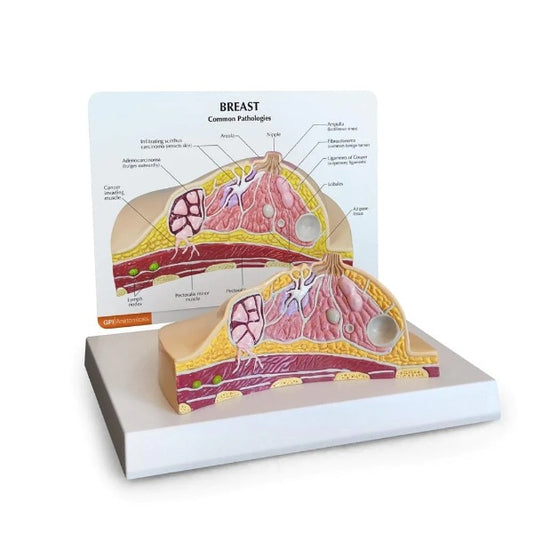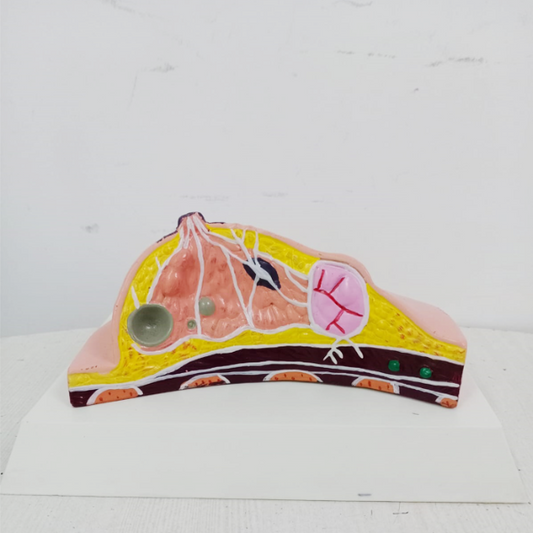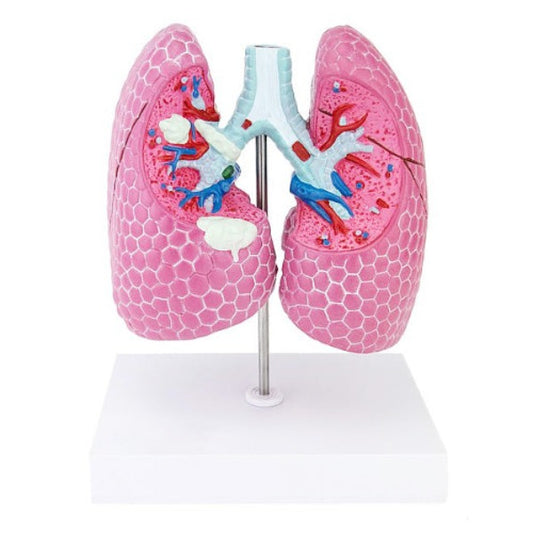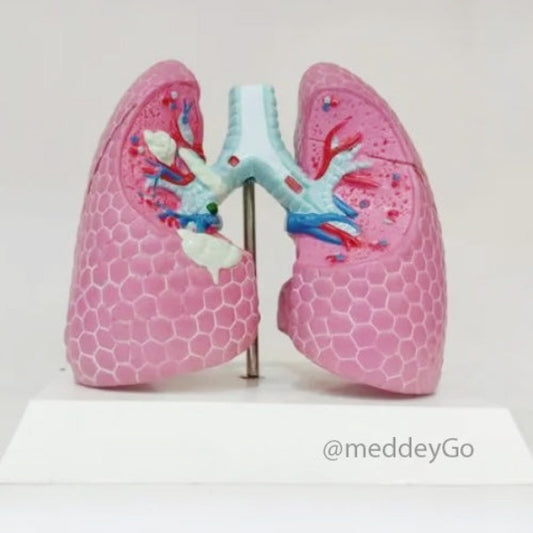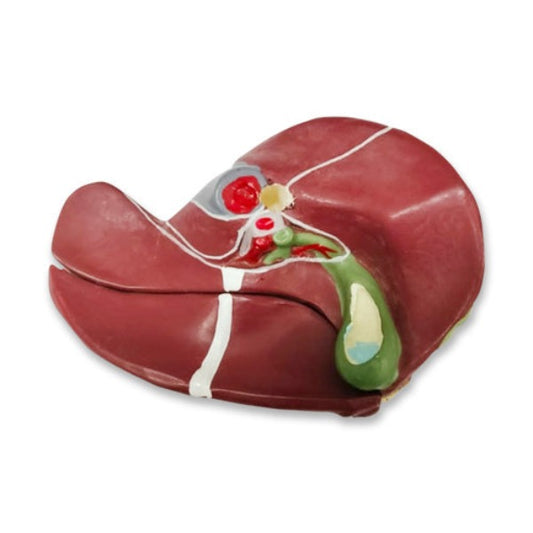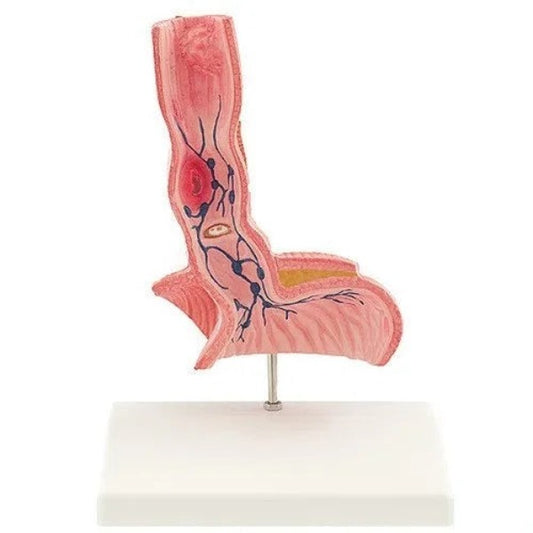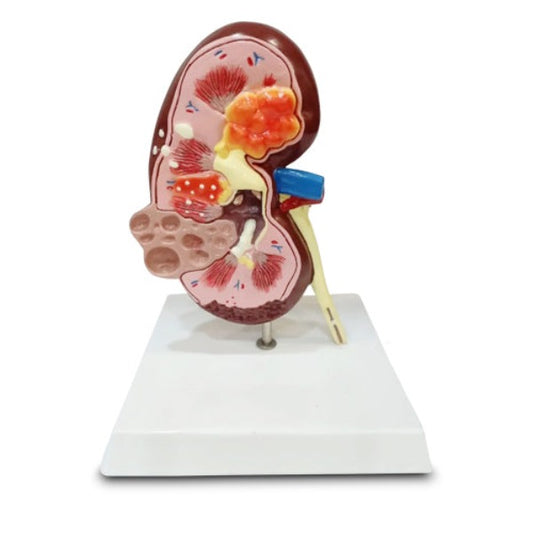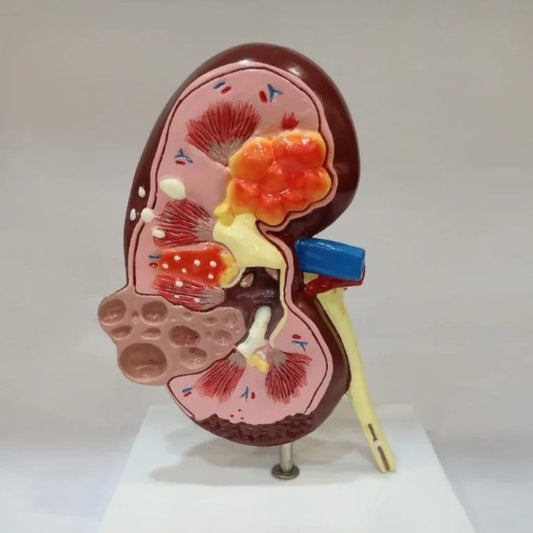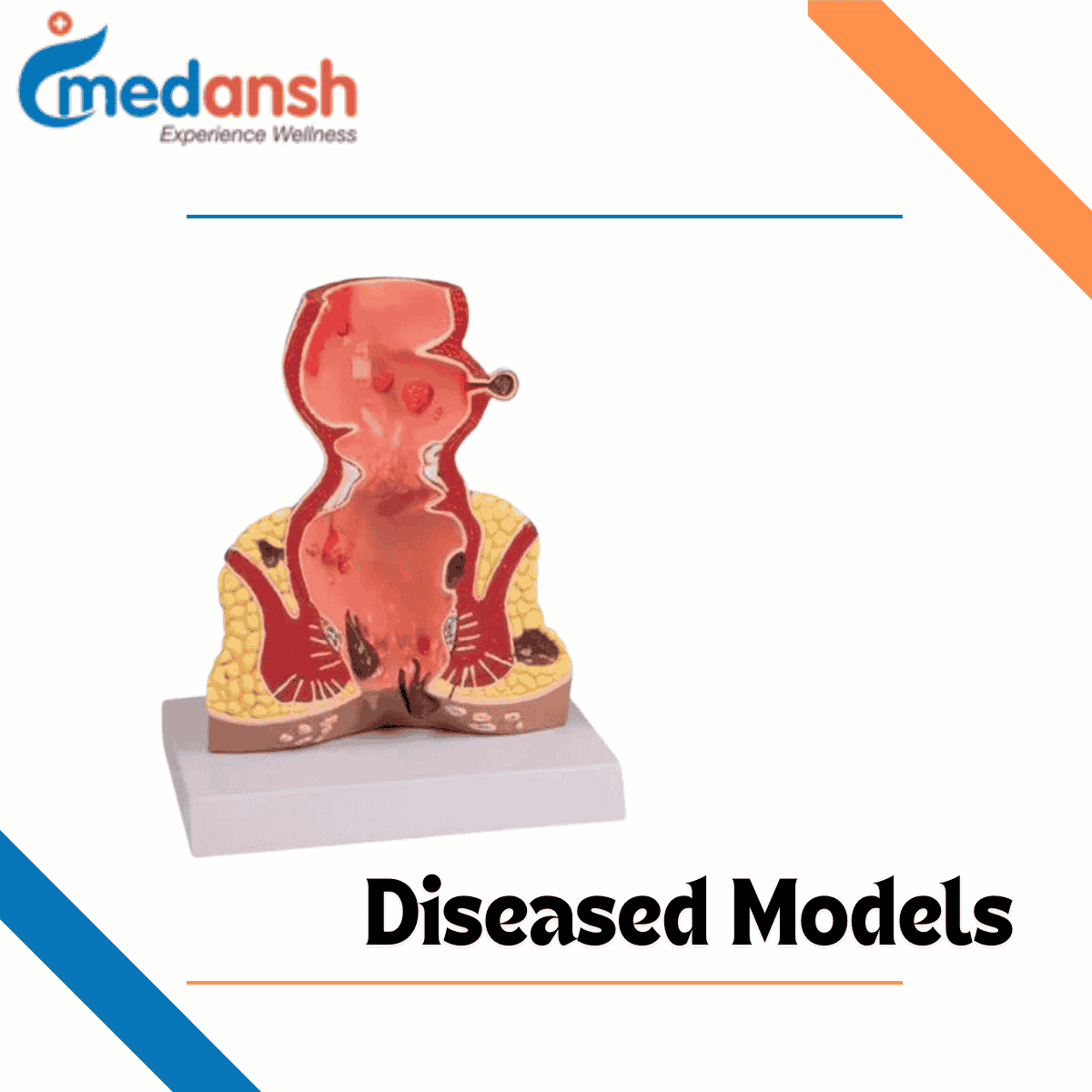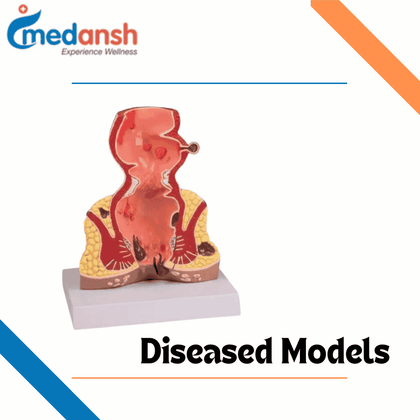-
Explore dental issues with the Diseased Tooth Model. An educational tool for understanding common dental conditions.Specifications:Model of a diseased tooth.Realistic representation of dental issues.Ideal for dental education.Durable and easy to handle.Detailed and accurate anatomy. Frequently Asked Questions : Q: WHAT ARE THE DIFFERENT PATHOLOGIES...
- Rs. 1,749Inclusive of all taxes
Rs. 2,800- Rs. 1,749
- Unit price
- per
Save Rs. 1,051Inclusive of all taxes
-
Key Product Features This anatomy model is a life-size frontal section of the rectum as well as a smaller relief on a pedestal. In addition to the anatomical structures of the rectum (sphincter, mucous membrane, venous plexus), the model shows internal hemorrhoids during stage...
- Rs. 2,299Inclusive of all taxes
Rs. 4,000- Rs. 2,299
- Unit price
- per
Save Rs. 1,701Inclusive of all taxes
-
Explore the complexities of rectal diseases with our anatomically accurate Diseased Rectum Model, a valuable tool for medical education.Specifications:Material: High-quality, medical-grade materials.Realism: Detailed representation of various rectal diseases.Size: Life-sized for realistic examination and demonstration.Educational Aid: Ideal for medical training, patient education, and clinical use.Durability:...
- Rs. 1,699Inclusive of all taxes
Rs. 3,000- Rs. 1,699
- Unit price
- per
Save Rs. 1,301Inclusive of all taxes
-
Product Key Features This model describes the most common pathological patterns of human stomach, such as gastric ulcer, gastric cancer, chronic atrophic gastritis, gastric bleeding and so on. Life size human stomach model, with highly detailed shown, great for medical/class study tool. Specifications:Detailed Anatomy:...
- Rs. 2,299Inclusive of all taxes
Rs. 4,000- Rs. 2,299
- Unit price
- per
Save Rs. 1,701Inclusive of all taxes
-
Product Key Features This full size model of diseased pancreas, spleen and gall bladder shows pancreatic cancer, the gallbladder with stones, a ruptured spleen and duodenum with an ulcer. Frequently Asked Question Q: WHAT IS THE SIZE OF THE MODEL? A: The model is...
- Rs. 2,299Inclusive of all taxes
Rs. 4,000- Rs. 2,299
- Unit price
- per
Save Rs. 1,701Inclusive of all taxes
-
Product Key Features This model shows Infiltrating scirrhous carcinoma, fibroadenoma, cysts, and an adenocarcinoma. Model also includes structures such as suspensory ligaments, fat tissue, lymph nodes, muscles and ribs. Size:16*11*7cm. Frequently Asked Question Q: WHAT DOES THIS MODEL SHOW? A: This model shows various...
- Rs. 2,699Inclusive of all taxes
Rs. 3,500- Rs. 2,699
- Unit price
- per
Save Rs. 801Inclusive of all taxes
-
Material : PVC Color : Natural Type : Pathological Model Set of two life-size, two-sided lung anatomy models, featuring 4 cutaway sections. The lung pathology model illustrates normal anatomy compared to a diseased lung. The effects of COPD (Chronic Obstructive Pulmonary Disease), lung cancer and asthma are demonstrated on...
- Rs. 8,499Inclusive of all taxes
Rs. 12,000- Rs. 8,499
- Unit price
- per
Save Rs. 3,501Inclusive of all taxes
-
Our small diseased liver model offers detailed insights into liver pathologies. An excellent educational tool for medical training.Specifications:Liver Pathologies: Depicts various liver diseases' effects.Educational Aid: Ideal for medical training and patient education.Realistic Features: Lifelike textures and colors for accuracy.Durable Build: Crafted from high-quality materials...
- Rs. 1,499Inclusive of all taxes
Rs. 2,500- Rs. 1,499
- Unit price
- per
Save Rs. 1,001Inclusive of all taxes
-
Key Product Features This vivid esophagus model is a life-size frontal section that reaches from the lower part of the esophagus to the upper part of the stomach. The following illnesses are replicated in the diseases of the esophagus model: Reflux esophagitis, Ulcer, Barrett's...
- Rs. 2,299Inclusive of all taxes
Rs. 4,000- Rs. 2,299
- Unit price
- per
Save Rs. 1,701Inclusive of all taxes
-
Product Key Features This two-sided kidney model has a normal anatomy cutaway on one side and a diseased anatomy cutaway on the other side depicting: infection, scarring, atrophy, urinary (kidney) stones, tumor, polycystic disease, hypertension effects. Size:12*12*16.5cm, Weight:0.8kgs Frequently Asked Question Q: WHAT IS...
- Rs. 2,799Inclusive of all taxes
Rs. 3,325- Rs. 2,799
- Unit price
- per
Save Rs. 526Inclusive of all taxes
Recently Viewed Products
Medansh
Example product title
- Rs. 20Inclusive of all taxes
- Rs. 20
- Unit price
- per
Inclusive of all taxes
Medansh
Example product title
- Rs. 20Inclusive of all taxes
- Rs. 20
- Unit price
- per
Inclusive of all taxes
Medansh
Example product title
- Rs. 20Inclusive of all taxes
- Rs. 20
- Unit price
- per
Inclusive of all taxes
Medansh
Example product title
- Rs. 20Inclusive of all taxes
- Rs. 20
- Unit price
- per
Inclusive of all taxes
Medansh
Example product title
- Rs. 20Inclusive of all taxes
- Rs. 20
- Unit price
- per
Inclusive of all taxes
Medansh
Example product title
- Rs. 20Inclusive of all taxes
- Rs. 20
- Unit price
- per
Inclusive of all taxes
Medansh
Example product title
- Rs. 20Inclusive of all taxes
- Rs. 20
- Unit price
- per
Inclusive of all taxes
Medansh
Example product title
- Rs. 20Inclusive of all taxes
- Rs. 20
- Unit price
- per
Inclusive of all taxes
Medansh
Example product title
- Rs. 20Inclusive of all taxes
- Rs. 20
- Unit price
- per
Inclusive of all taxes
Medansh
Example product title
- Rs. 20Inclusive of all taxes
- Rs. 20
- Unit price
- per
Inclusive of all taxes
- Choosing a selection results in a full page refresh.

